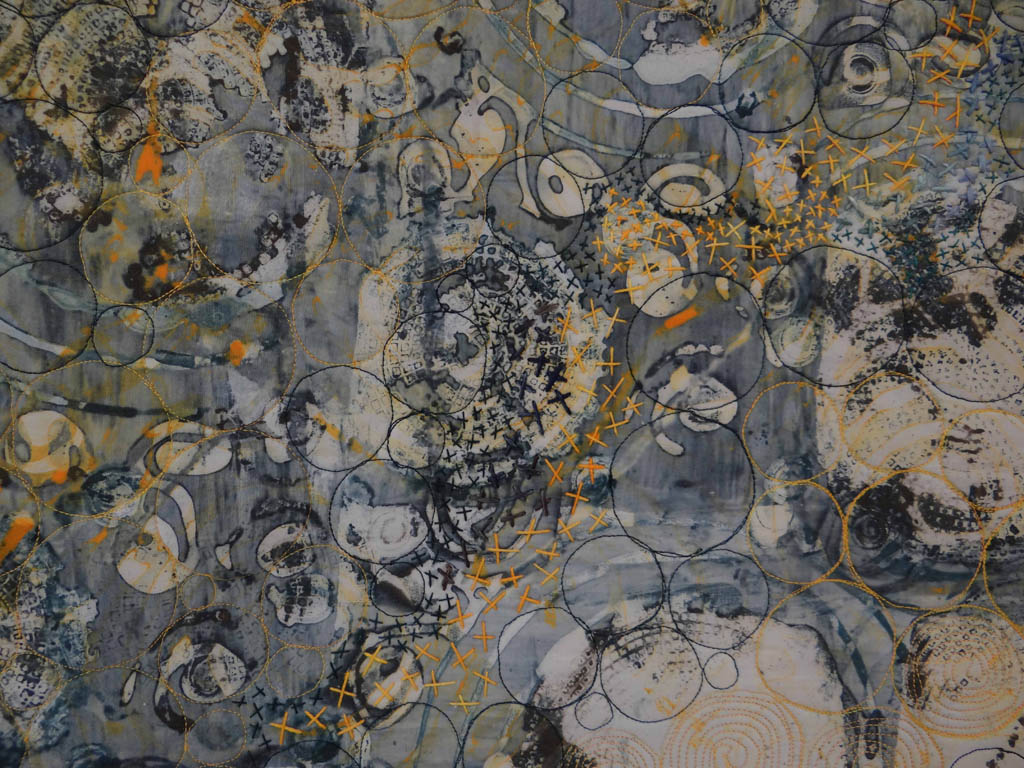Every artist has a bridge piece in them don't they? This is mine. It is not an unusual bridge in terms of design but it is quite striking when seen from the link road in St Helens. And I've tried to capture that in this quilt. The colours look solid from a distance but closer inspection reveals lots of lovely texture created by using breakdown printing in a limited colour palette. It has been made for my upcoming exhibition with Helen Conway at The World of Glass, St Helens.
I am really happy with this piece and may make more 'bridge' pieces but it did make me wonder about genre. I have intentionally tried to work in a more abstract way in recent years but, despite the colours used, this piece doesn't feel abstract. So what is it?
The Tate defines abstract art as 'art that does not attempt to represent an accurate depiction of a visual reality but instead uses shapes, colours, forms and gestural marks to achieve its effect'. Wikipedia defines it as art 'that uses a visual language of shape, form, colour and line to create a composition which may exist with a degree of independence from visual references in the world'. Hmm … well the colours may be abstract but, as I wanted it to look like a bridge, the finished piece cannot be called abstract.
The Tate defines figurative art as 'any form of modern art that retains strong references to the real world and particularly to the human figure'. Wiki says that figurative art 'describes artwork - particularly paintings and sculptures - that is clearly derived from real object sources, and is therefore by definition representational'. And the Tate defines representational as a 'blanket term for art that represents some aspect of reality, in a more or less straightforward way'. The quilt is not a painting, or a sculpture nor does it refer to the human figure but figurative seems like a good fit.
So what about the quilt world? If I wanted to enter it into Festival of Quilts which category would I choose? They don't have an 'abstract' category but their definition of an Art Quilt is 'quilts with both a strong visual impact and a high quality of execution designed to be displayed as artwork and communicating an idea, emotion or concept through the medium of textile and stitch'. Sherdley Road has strong visual impact and you will need to make my word for the fact that it is incredibly well made but it doesn't represent an idea, emotion or concept. It represents a bridge. Which means that it fits with their description of a Pictorial Quilt which are 'quilts depicting a scene or subject eg: people, animal, flowers etc as the main body of the quilt. A figurative or representational piece'. Hmm ….. A lot of the pieces entered into this category are very literal - often photo like representations of their subject. Wonder how my piece would be judged? I guess there is only one way to find out!


 It will come as no surprise when I say that 95%+ of the textiles I use in my work are created using breakdown printing. Sometimes I include dyed pieces, sometimes I add a layer of print using thermofax but breakdown is my love.
It will come as no surprise when I say that 95%+ of the textiles I use in my work are created using breakdown printing. Sometimes I include dyed pieces, sometimes I add a layer of print using thermofax but breakdown is my love.


 After four really productive weeks of making small art I have had a disappointing week; struggling to get any level of momentum. I spent the week as I planned to - researching and creating cloth for the third string of work that I will exhibit next year. The inspiration comes from those industries, and those structures, that no longer exist - the coal mining industry around St Helens, Lancashire being a great example. I wasn't working completely from scratch. I have learnt from a couple of failed attempts at printing cloth so I had a pretty clear idea of what I wanted to achieve and how. And I'd already found a great resource on line - the
After four really productive weeks of making small art I have had a disappointing week; struggling to get any level of momentum. I spent the week as I planned to - researching and creating cloth for the third string of work that I will exhibit next year. The inspiration comes from those industries, and those structures, that no longer exist - the coal mining industry around St Helens, Lancashire being a great example. I wasn't working completely from scratch. I have learnt from a couple of failed attempts at printing cloth so I had a pretty clear idea of what I wanted to achieve and how. And I'd already found a great resource on line - the 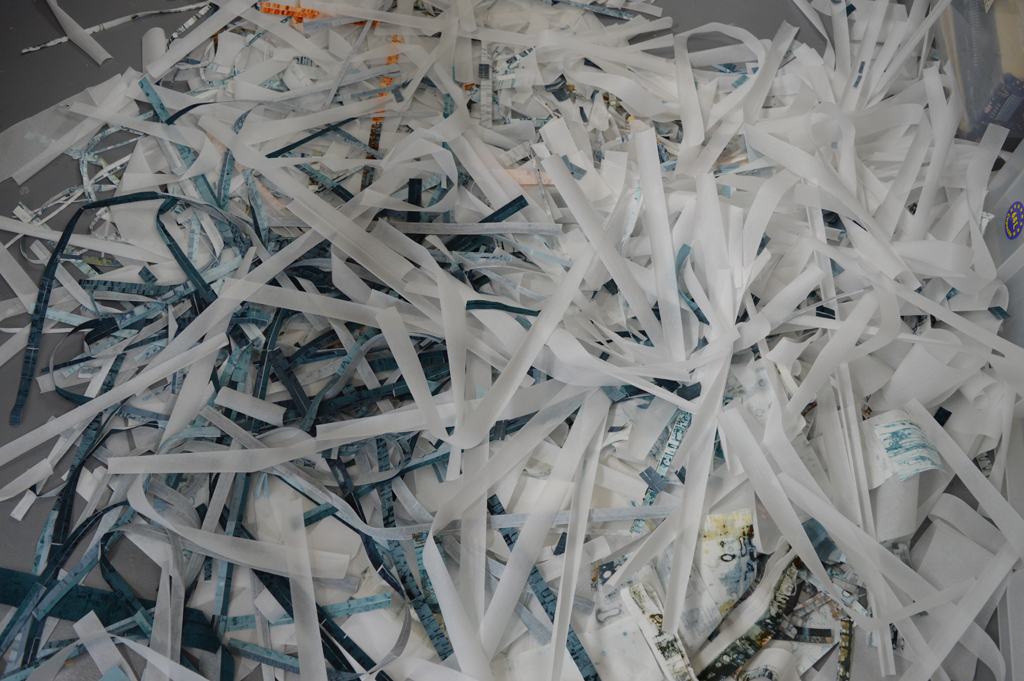 I recently
I recently 
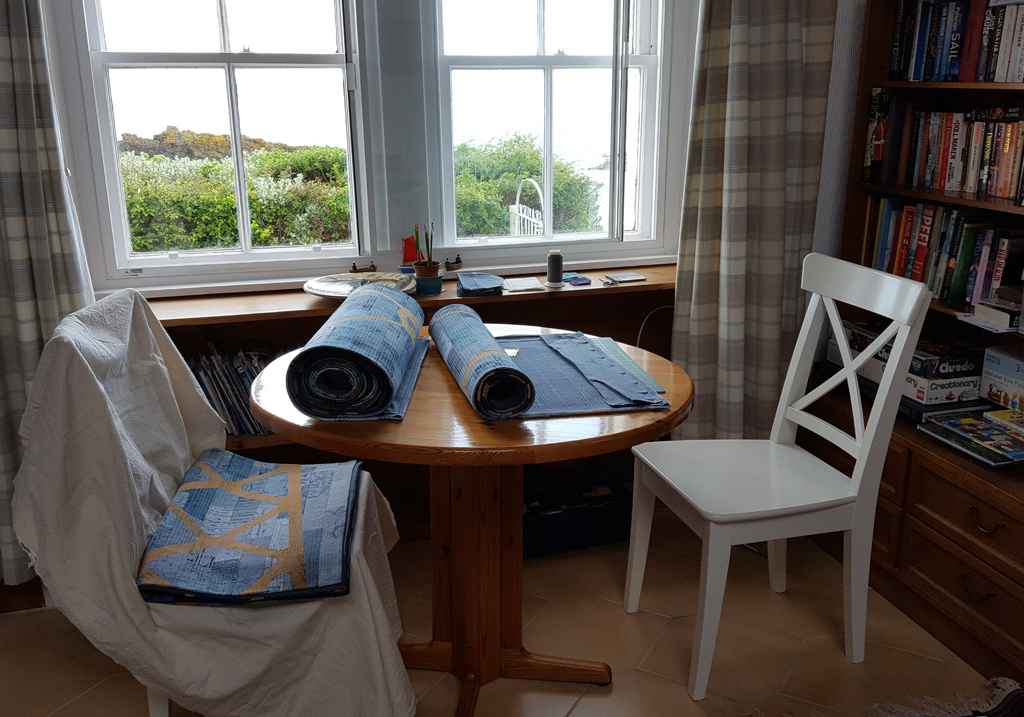 It's a wet morning here in Dunure so time to stitch sleeves onto quilts, time to drink coffee and read the newspaper, and time to think. To think about the work I need to create for my exhibitions next year. And time to think about how I work.
It's a wet morning here in Dunure so time to stitch sleeves onto quilts, time to drink coffee and read the newspaper, and time to think. To think about the work I need to create for my exhibitions next year. And time to think about how I work.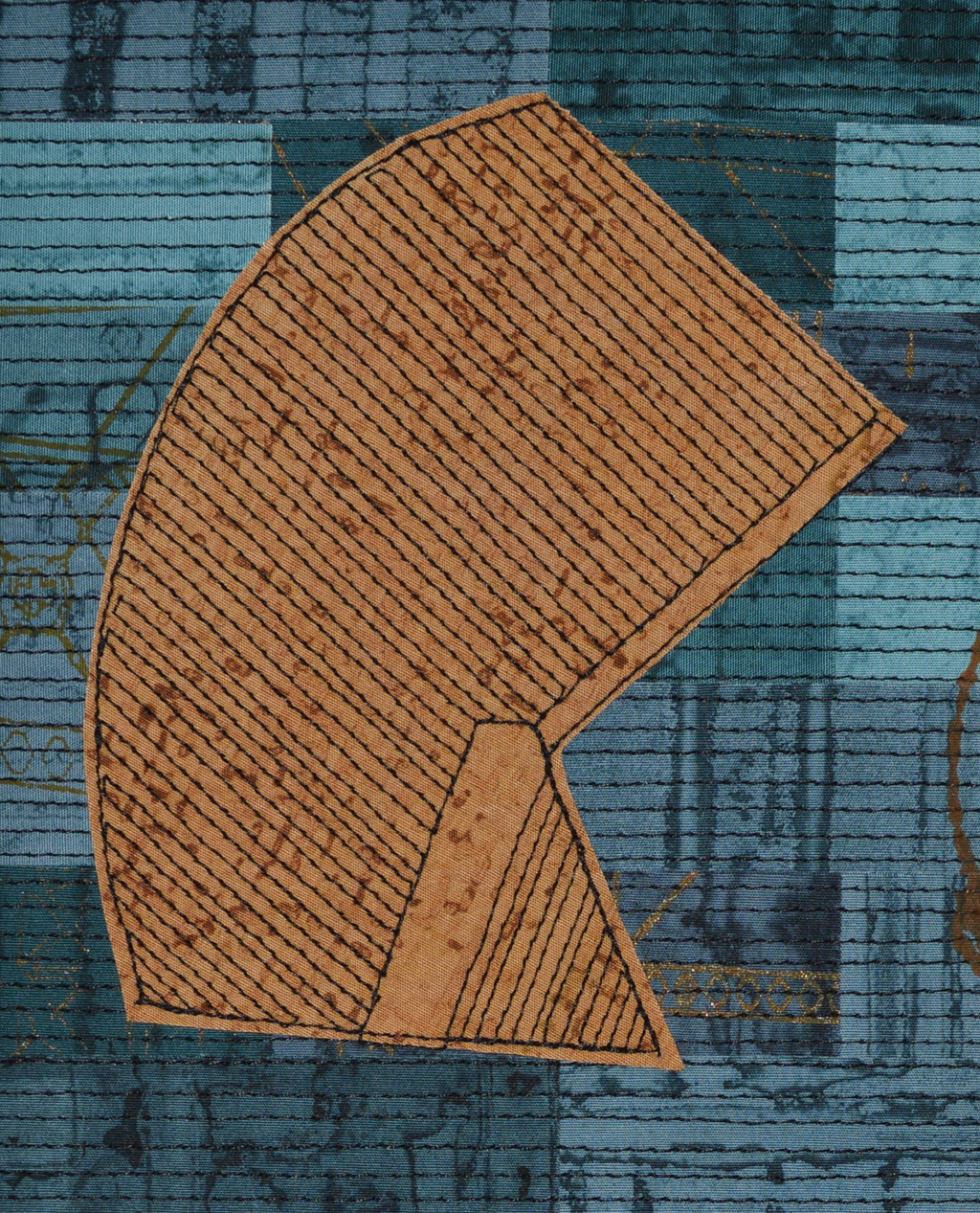 Inspiration is a very personal thing. My inspirations are nearly all urban. I love industrial landscapes although it is getting harder to distinguish between pale grey corrugated metal retail parks and pale grey corrugated metal factories. Some would say that both are factories.
Inspiration is a very personal thing. My inspirations are nearly all urban. I love industrial landscapes although it is getting harder to distinguish between pale grey corrugated metal retail parks and pale grey corrugated metal factories. Some would say that both are factories.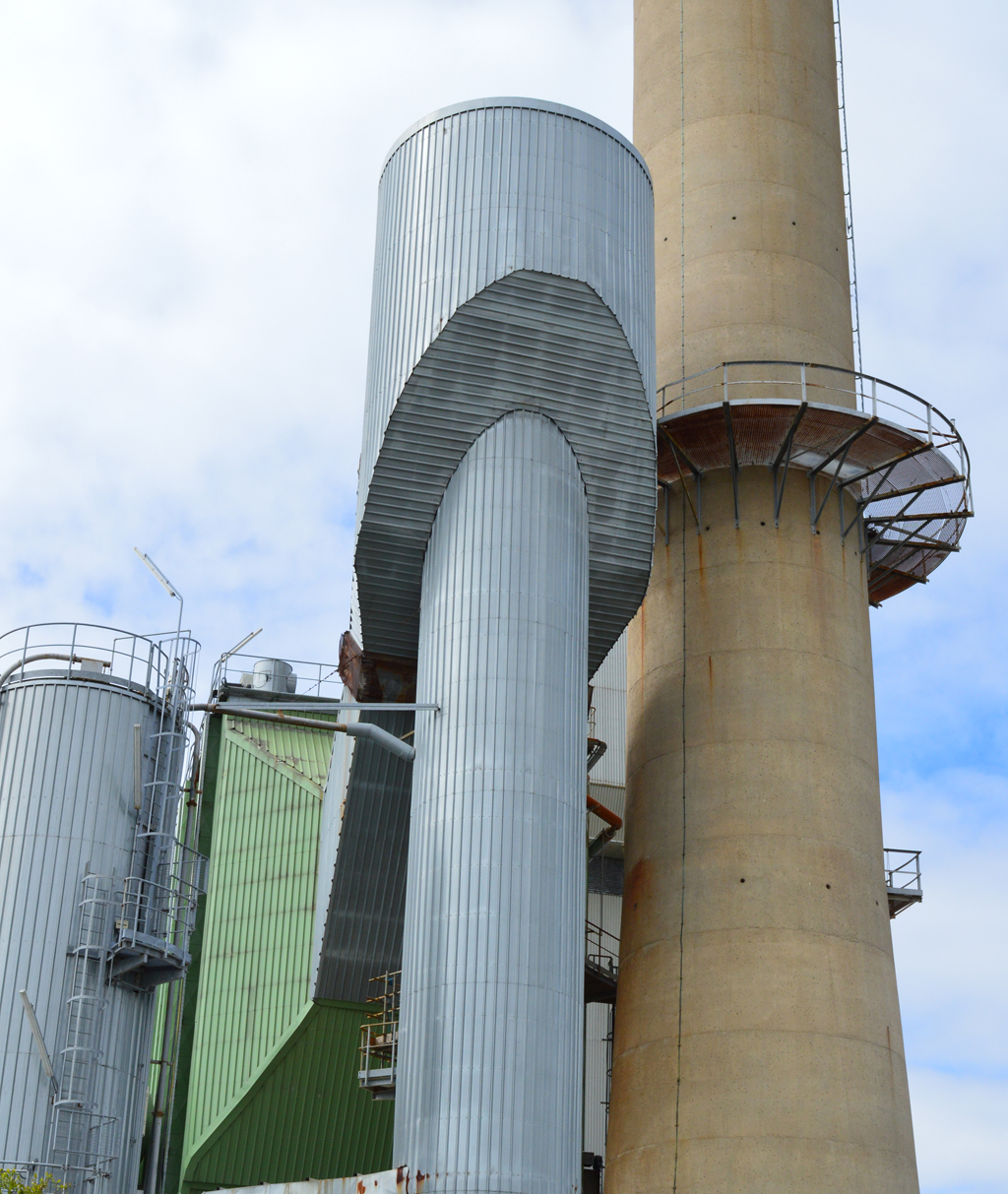
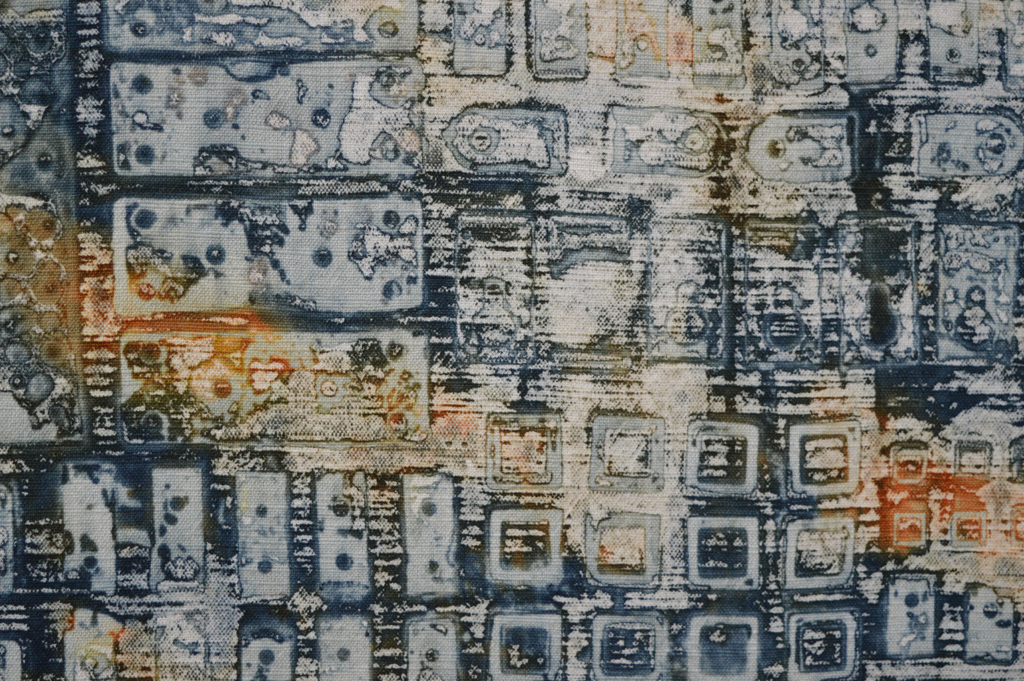 One of my goals for 2017 was to increase the number of blog posts by posting at least once a week. I've noticed that I get more 'traffic' when I put out posts close together. But I'm failing dismally. Why? Probably because I feel like my posts should have a proper subject, ideally something I've not covered before. It was easy last year when I was making and submitting lots of pieces. I could write about each piece, about my sucesses and my failures.
One of my goals for 2017 was to increase the number of blog posts by posting at least once a week. I've noticed that I get more 'traffic' when I put out posts close together. But I'm failing dismally. Why? Probably because I feel like my posts should have a proper subject, ideally something I've not covered before. It was easy last year when I was making and submitting lots of pieces. I could write about each piece, about my sucesses and my failures.
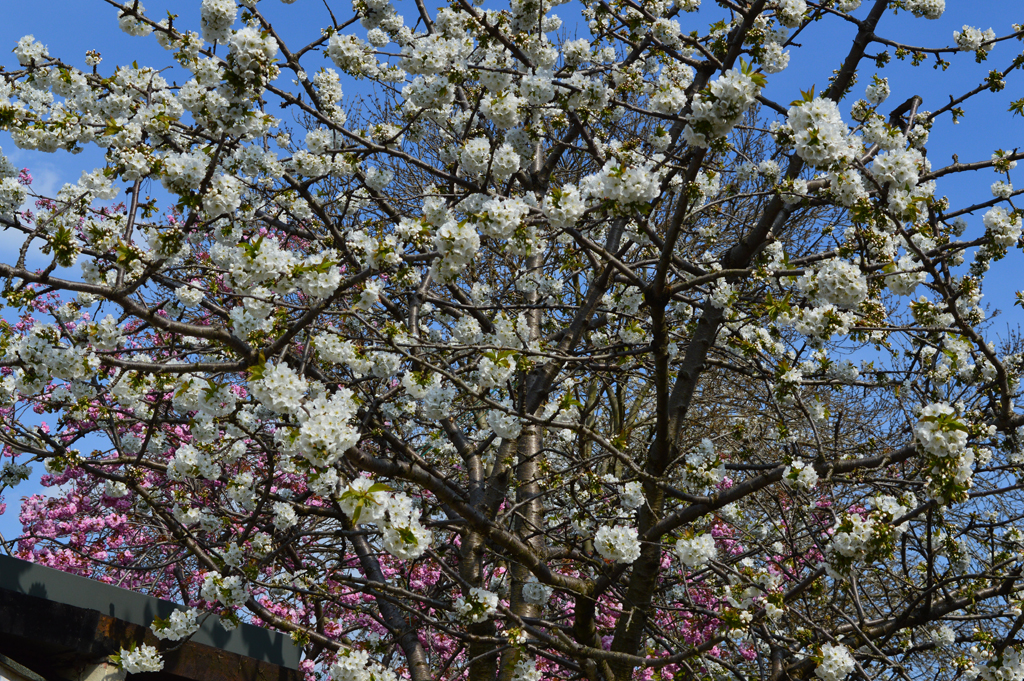 This last weekend was perfect. Blue skies. A balmy 20C. Blossom on the cherry tree. Coffee in the garden. And long, productive hours in the studio.
This last weekend was perfect. Blue skies. A balmy 20C. Blossom on the cherry tree. Coffee in the garden. And long, productive hours in the studio.
